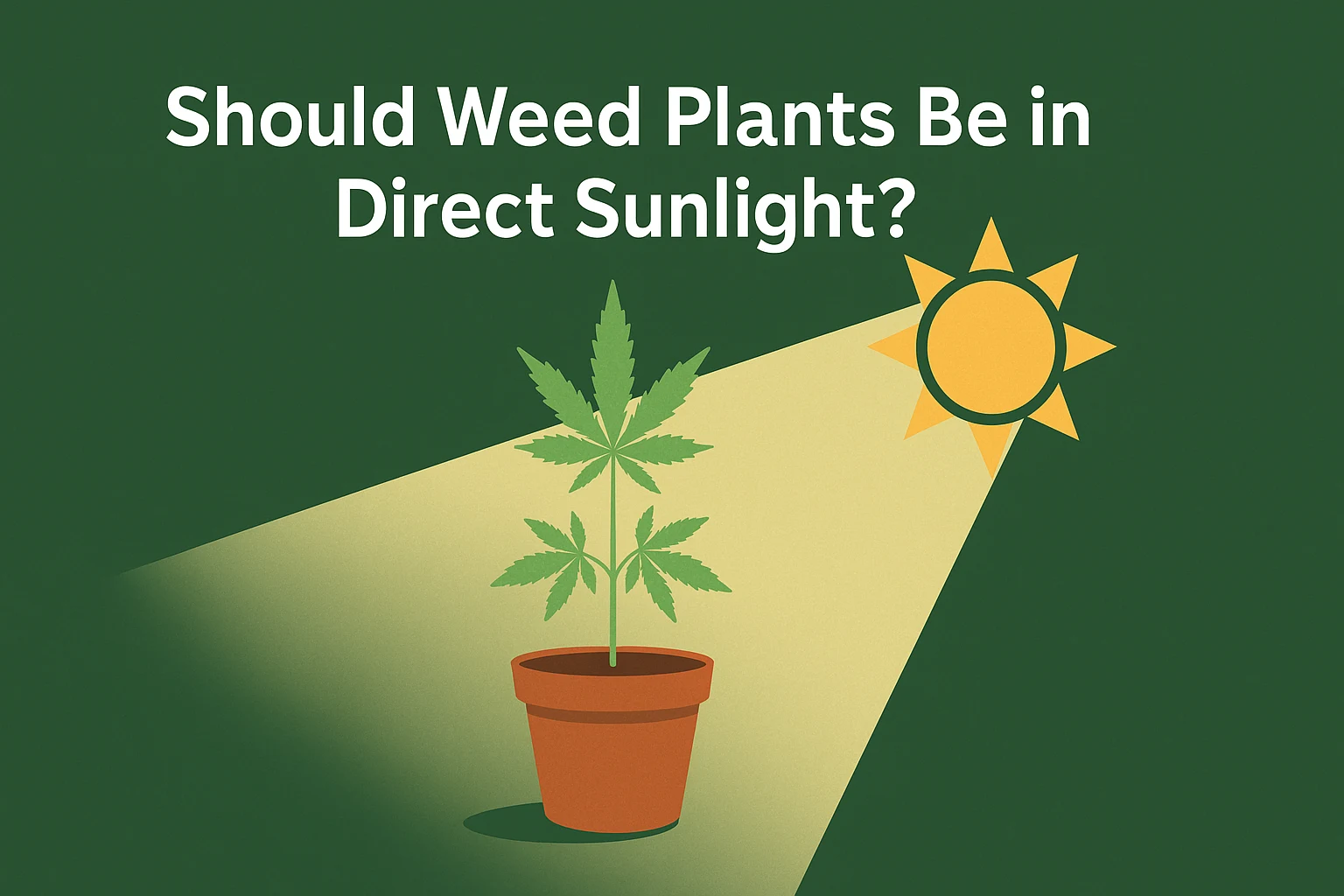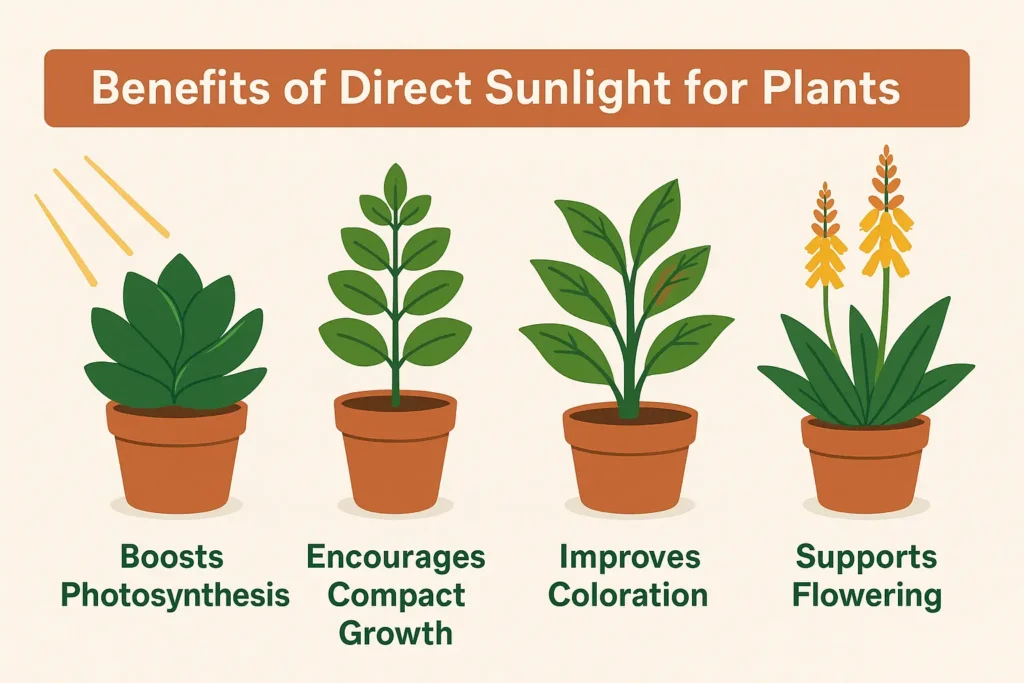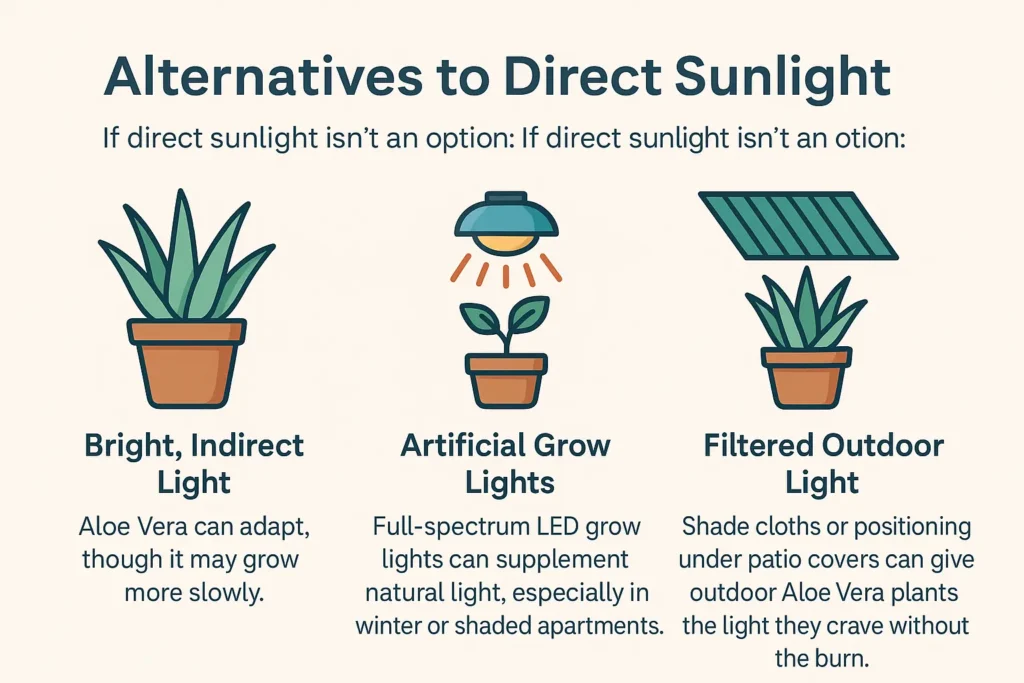Should Weed Plants Be in Direct Sunlight? (Marijuana Plant Sunlight Guide)

Should weed plants be in direct sunlight? Yes, both weed and marijuana plants thrive in direct sunlight for optimal growth and bud production. Cannabis plants naturally evolved in sunny climates and need 6–8 hours of direct sunlight daily. However, excessive heat or intense afternoon sun can stress plants, causing light burn or dehydration. Balancing sunlight with proper watering and shade during peak hours ensures healthy, high-yielding marijuana plants.
Introduction
For anyone growing cannabis at home, the first question often is: Should weed plants be in direct sunlight? Or, phrased differently, should marijuana plants be in direct sunlight?
Understanding this is critical. Marijuana, also known as weed, cannabis, or pot, is a sun-loving plant by nature. But “more sun” isn’t always “better.” Like any plant, cannabis has its sweet spot.
This guide breaks down whether marijuana plants should be in direct sunlight, how much is ideal, and how to manage sunlight exposure for healthy growth.
Understanding Marijuana’s Natural Habitat
Cannabis plants originally hail from regions with long, sun-drenched summers — places like Central Asia, Afghanistan, and northern India. These native environments offer abundant direct sunlight, shaping cannabis into a full-sun species.
Weed plants are adapted to absorb and utilize intense sunlight for photosynthesis, stem strengthening, and flower (bud) production. This is why outdoor-grown marijuana often outshines indoor yields when light conditions are ideal.
So when people ask, should weed plants be in direct sunlight? — the answer ties back to their evolutionary roots.
Benefits of Direct Sunlight for Marijuana Plants
Should marijuana plants be in direct sunlight? For the most part, yes — and here’s why:
- Enhanced Photosynthesis: Direct sunlight provides the full spectrum of light wavelengths essential for photosynthesis, promoting lush vegetative growth and resin production.
- Bud Development: Light is directly correlated with yield. The more direct sunlight marijuana plants receive, the larger and denser the buds become.
- Strong Structural Growth: Sun exposure strengthens stems and branches, allowing the plant to support the weight of heavy buds during flowering.
- Natural Pest and Mold Resistance: Sun and airflow reduce humidity around foliage, lowering the risk of mold and pests.
In short, if you want big, potent buds, ample direct sunlight is non-negotiable.
Risks of Excessive Direct Sunlight
Despite their love for light, there is such a thing as too much direct sunlight for marijuana plants.
Common signs of overexposure include:
- Leaf Burn (Bleaching): Pale, crispy leaf edges from intense afternoon sun.
- Wilting: Plants droop as they struggle with water loss under high heat.
- Soil Dry Out: Direct sun accelerates evaporation, stressing root systems.
For growers asking, should weed plants be in direct sunlight all day? — the answer is yes, but with care. Managing heat and hydration is critical to avoid plant stress.tly.
Can Marijuana Plants Grow Without Direct Sunlight?
While possible, growing cannabis without direct sun often results in weaker plants and smaller yields.
Alternatives:
- Bright, Indirect Light: Suitable for seedlings or early vegetative stages.
- LED Grow Lights: Full-spectrum LEDs can successfully replace sunlight indoors.
- Filtered Light (Shade Cloths): Outdoors, this can soften intense sun while maintaining enough light for photosynthesis.
Still, for outdoor growing, nothing matches the effectiveness of natural direct sunlight for weed plants.roach ensures that your seedlings get the light they need without the risk of damage.
Ideal Light Conditions for Weed & Marijuana Plants
For best results, marijuana plants should get 6–8 hours of direct sunlight daily.
Pro Tips:
- Morning Sun is Best: Cooler, gentler sunlight aids photosynthesis without the harsh heat.
- Afternoon Shade Helps: In hotter regions, providing shade during peak afternoon hours prevents stress.
- Indoor Alternatives: For indoor growers, high-quality LED grow lights mimicking direct sunlight are essential for robust marijuana growth.
Need help selecting plants for sunny spots? Check out our full Plants for Direct Sunlight Guide.
Seasonal and Location-Based Adjustments
The right amount of sun depends on your location and season:
- Spring & Summer: Prime growing months with abundant direct sunlight.
- Late Summer Heatwaves: Use shade cloths to reduce midday intensity.
- Autumn: Shorter daylight hours naturally trigger flowering in marijuana plants.
Growers in cooler climates should maximize exposure, while those in hot zones must balance sun with protection.
Practical Tips to Manage Direct Sunlight for Weed Plants
- Observe Leaf Behavior: Healthy leaves will face upward. Drooping, curling, or bleaching indicate stress.
- Soil Moisture is Key: Regular watering combats increased evaporation from direct sunlight.
- Use Mulch or Ground Cover: Helps retain soil moisture around root zones.
- Moveable Containers: Allow repositioning to follow morning sun and avoid harsh afternoon rays.
Smart growers tailor their care based on how marijuana plants respond to direct sunlight in their specific environment.
Conclusion
To wrap up: should newly planted seeds be in direct sunlight? In most cases, no—not immediately. Seeds need moisture, warmth, and oxygen more than direct sunlight during germination. Once seedlings emerge, introducing direct sunlight gradually is beneficial, but too much too soon can harm tender plants.
Monitor your plants closely, adjust their light exposure based on species and environment, and use protective measures like filtered light or shade when needed. By paying attention to these details, you’ll give your seedlings the best possible start.
Check out our plants for direct sunlight guide. It’s packed with practical tips for sun-loving plants beyond basil.
Explore More Guides and Calculators
At PlantCalculators, we’re all about making plant care easier. Dive into our other handy guides and tools:
- Mulch Calculator: Find out how much light your specific plant needs.
- Watering Calculator: Personalized watering guides based on your environment.
- Soil Calculator: Get the dirt on soil mixes and feeding routines.
- Cannabis Yield Calculator
- Grow Room Calculator Suite
Visit our Houseplants section for a full library of resources designed to help your plants thrive.
Recommended Resource for Further Reading
For expert-backed, science-based houseplant care tips, we highly recommend this comprehensive guide from the University of Illinois Extension. It’s a fantastic resource for learning about indoor plant care, common issues, and best practices.


